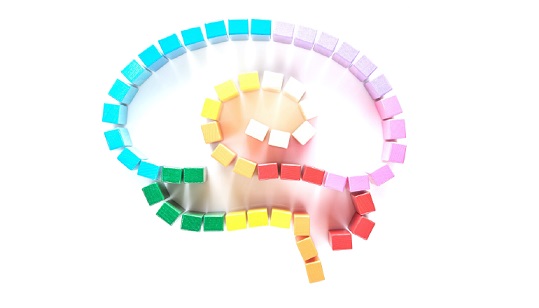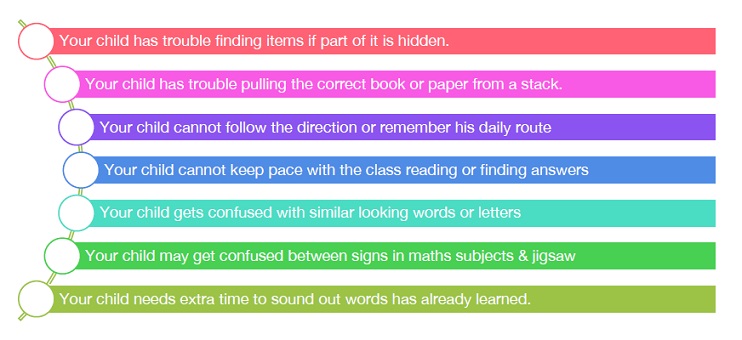COGNITIVE FIGURAL UNIT (CFU)
Explained: VISUAL CLOSURE
Visual processing skills plays an important role in organising and interpreting the information that is seen and give it meaning. Our eyes continuously send large amount of information to our brains to process. Hence it is important for our eyes to send proper information in a way that makes sense, the brain can then process it, thus allowing us to form thoughts, make decisions, and create action. Visual Closure is the skill that allows us to detect, differentiate, select, draw conclusions and understand information when we are only given certain pieces of information, rather than the entire account, story or explanation.

CFU - Visual Closure is the ability of the eyes to visualise a complete image or object when only a portion is seen. It is the brain's ability to recognise a familiar item, word or picture when only shown a small part of it. It's the way the mind uses past information to "fill in the blanks" to envision the whole. A child can see just part of a letter or number when reading and recognise how to write that figure or read fluently.
Learning
involves making sense of the presented material by attending to relevant information, mentally reorganizing it and connecting it with what you already know. Learning involves strengthening correct responses and improving incorrect responses.Students fail in learning situations - often because they do not have the prerequisite intellectual abilities. CFU is one of them that plays an important role in learning new information, CFU is a foundational ability for reading since it plays a key role in letter recognition. CFU is measuring a cognitive representation of physiological visual processing.

Importance CFU - (Aiming at the target) it is the ability where the eyes are able to come together and sustain focus while completing a reading or writing task. This ability is necessary to quickly view objects and mentally determine what they are before we see the entire object.
- It is required for reading quickly and predicting differences in similar words.
- Allows us to comprehend words and letters without actively assessing each line.
- Daily living activities (i.e. finding lost objects that are partially hidden).
- Speed of writing is determined on this
- It is a foundation skill for fluency and speed spelling.
- Recognition on how many number of similar objects
- This supports number recognition and maths subjects
Watch out signs would be for Visual Closure:

How can you help a child develop visual closure skills?
Children need adequate visual closure perceptual skills to function properly in school and at home. If you have concerns about your child's visual skills, be sure to start out by having your child undergo a thorough vision examination by an optometrist or an ophthalmologist (medical doctor). If your child has difficulties with visual closure skills try using a multi-sensory approach to learning new material (i.e. allow the child to touch, move and manipulate objects to better visually understand the information). Here are some activities to help a child develop visual closure skills:
- Partially hide objects or toys and ask the child what is hiding without revealing the entire object
- Cover up parts of a picture and see if the child can guess what the image is
- Play "Find the Object": pick any small object in your house such as a clothes pin. Have the child close eyes. Hide the clothes pin in the room with a part of the clothes pin showing. The child has to find the hidden clothes pin.
- Complete Dot to Dot puzzles or jigsaw puzzles
- Find a simple picture in a magazine and fold it in half. Glue it on a piece of paper. See if the child can finish drawing the other side of the picture. For example, see if the child could draw in the missing sections of this zebra picture
- Take close up pictures of objects and see if your child can recognize what the object is
- Precise- an accurate answer is derived after the process. This means that a certain concept may either be right or wrong
- Logical - a linear method is used and rational steps are taken to figure out the correct solution
With SOI, we are able to identify the problem through a series of cognitive, sensory and visual assessments and screenings. The best news is, we just don't identify. We have a systematic remedy for the same.
